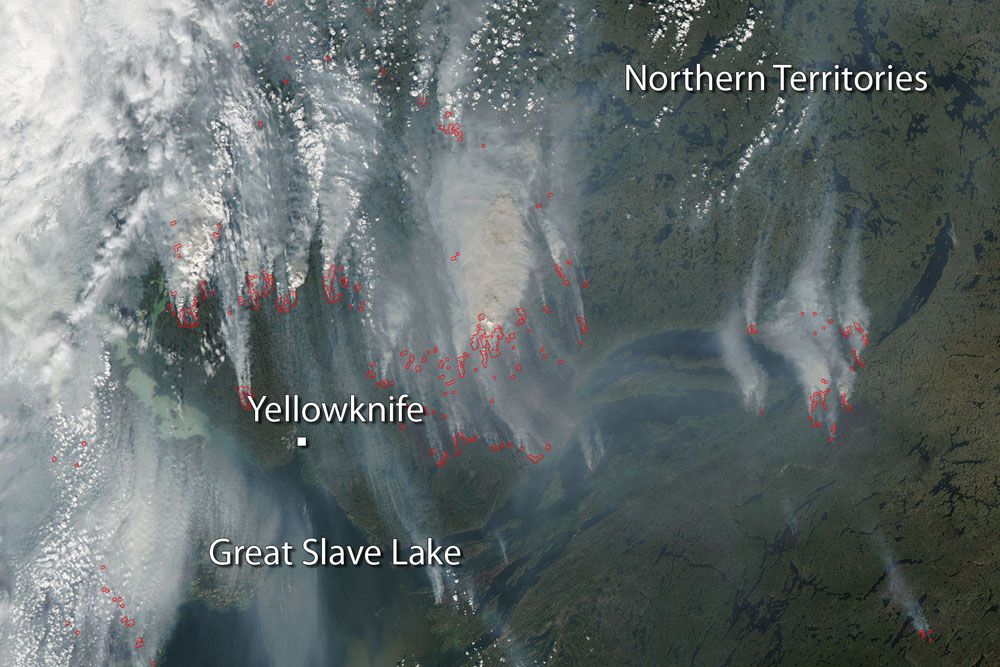Remote Canadian Fires Seen from Space (Photo)

Heavy smoke obscures the region around Yellowknife, Canada, in a new satellite image of wildfires that have choked the air and confined residents indoors.
Yellowknife sits on the banks of the Great Slave Lake in Canada's Northwest Territories. The fire season in the Northwest Territories has been harsh this year, with 284 fires reported so far, according to the region's Environment and Natural Resources Forest Management Division. More than 2.6 million acres (1,065,410 hectares) have burned. (In January 1978, the Soviet nuclear-powered spacecraft called Cosmos 954 fell into the Northwest Territories, scattering radioactive material from the Great Slave Lake into northern Saskatchewan and Alberta.)
The fires have not threatened the city directly, but their smoke has caused road closures and air quality problems, according to the Northern Journal. Supply trucks and residents trying to get in and out of the city have to wait for temporary wind shifts that lift the smoke, allowing enough visibility to drive. Highway 3, which connects Yellowknife to nearby towns and other highways, was closed until further notice, according to the territory's Department of Transportation.
On July 22, the air quality health risk in Yellowknife reached 10 on a 10-point scale. As of yesterday morning (July 30), the air quality health index was at 6, implying a moderate risk to health. More smoke was expected to bring the risk back up to 9 by night, however.
This image of the fires comes courtesy the Moderate Resolution Imaging Spectroradiometer aboard NASA's Aqua satellite. The instrument captured the image on July 26.
Editor's Note: If you have an amazing nature or general science photo you'd like to share for a possible story or image gallery, please contact managing editor Jeanna Bryner at LSphotos@livescience.com.
Follow Stephanie Pappas on Twitter and Google+. Follow us @livescience, Facebook & Google+. Original article on Live Science.
Sign up for the Live Science daily newsletter now
Get the world’s most fascinating discoveries delivered straight to your inbox.

Stephanie Pappas is a contributing writer for Live Science, covering topics ranging from geoscience to archaeology to the human brain and behavior. She was previously a senior writer for Live Science but is now a freelancer based in Denver, Colorado, and regularly contributes to Scientific American and The Monitor, the monthly magazine of the American Psychological Association. Stephanie received a bachelor's degree in psychology from the University of South Carolina and a graduate certificate in science communication from the University of California, Santa Cruz.










